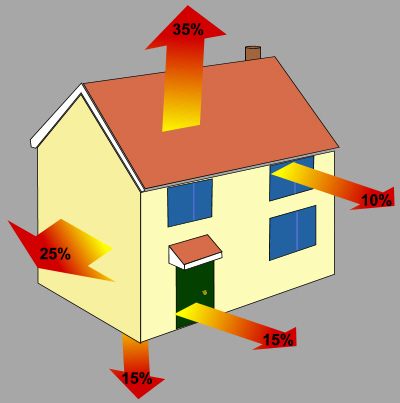The largest misconception people have regarding energy is where they believe they use and waste the most.
Where is your home energy going?
Are your monthly utility bills high? You might not know it, but your home might be leaking energy. Air conditioners and heaters are running longer than they need to because warm or cool air is getting out through cracks, poorly insulated walls, or a leak in the attic. These kinds of energy leaks could cost you hundreds of dollars every year. Finding out where your energy is going to be wasted and how to stop it will save you money and keep your home warm.
Heating and Cooling: The Hidden Energy Drain
The most energy-hungry things in homes are heating and cooling. If your home isn’t well-insulated, you’re heating and cooling systems must work harder to keep it warm or cool. This costs more money and makes heating and cooling units require regular maintenance
Common offenders are:
- There isn’t enough insulation in the attic.
- Holes and leaks around doors and windows
- Walls on the outside that don’t have enough insulation
If the conditioned air escapes as fast as it’s made, you’re wasting energy, even if you’re heating and cooling system is energy-efficient. This is where hiring experienced home insulation contractors can really help.
The Power of Insulation in Cutting Energy Waste
Insulation keeps warm air inside in the winter and cool air inside in the summer. Heat naturally moves from warmer places to cooler places, and your HVAC system has to make up for the heat that is lost.
Spray foam insulation services and cellulose attic insulation are two options that can help stop this loss. For instance, spray foam fills in all the cracks, stopping air from getting through. Cellulose insulation, which is made from old paper products, has a higher thermal value and helps keep heat inside.
The first thing you need to do is get a professional to look at the insulation in your home. A full inspection will show you where you’re losing the most energy and suggest the best insulation materials for your needs.
Eco-Friendly Insulation: Good for Your Wallet and the Planet
Modern insulation products do more than just save energy costs; they also have less of an impact on the environment. Closed-cell spray foam insulation and other eco-friendly products create an air-tight seal that can make your home up to 50% more energy efficient. You save energy and lower your home’s carbon footprint because you’re heating and cooling system doesn’t have to work as hard.
Cellulose attic insulation is also good for the environment. The fact that it is made from up to 85% recycled materials and that it is made in a way that uses less energy than most other types of insulation products are two of its best features. This product can save you money on energy costs in the long run, and it can also help the planet.
For homeowners, using eco-friendly insulation is not just a trend; it’s a smart investment. You will have more money in your pocket if you pay less for energy, and the smaller carbon footprint means that resources will be available for future generations.
Stop Energy Loss Before It Costs You More
Most homes don’t have enough insulation, which means that every month, your money and energy are going down the drain. One simple upgrade can change everything overnight. No matter what type of insulation you choose—spray foam, cellulose, or a mix of the two—you’ll end up with a more comfortable home, lower utility bills, and a home that is better for the environment.
The second-best thing to do if you want to know where your home’s energy is going is to have a professional look at it. They will be able to find the hot spots and recommend the right insulation, which could be anything from closed-cell spray foam to eco-friendly cellulose.
You don’t know how much energy loss is costing you. The sooner you deal with it, the sooner your house will be warmer, cooler, and more energy-efficient all year long.
Reduce Energy Costs with Insulation
Insulation is the most effective way to reduce energy costs. By using energy-efficient insulation techniques, 70 to 90 percent of a building’s heating and cooling need could be cut.
Call us today. Ask how you can reduce your energy waste with eco-friendly insulation!






